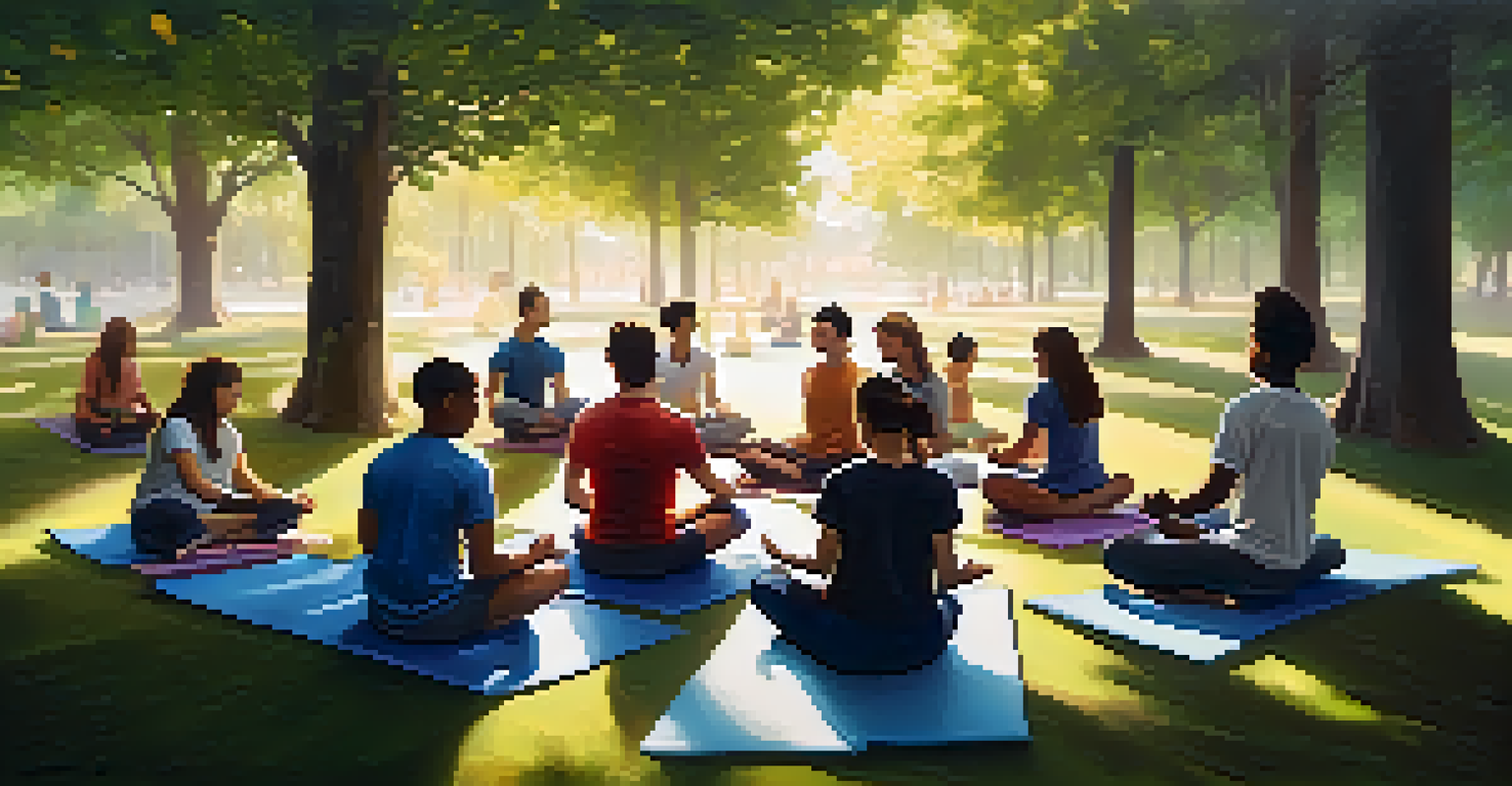The Impact of Social Media on Student Mental Health

Understanding Social Media’s Role in Student Life
Social media has become a staple in students' daily routines, offering a platform for communication, networking, and self-expression. With platforms like Instagram, Snapchat, and TikTok, students are constantly engaged online, which shapes their social interactions and perceptions. However, this constant connectivity can have both positive and negative implications for mental health, making it essential to explore its impact comprehensively.
Social media is a tool. It’s how you use it that makes the difference.
For many students, social media can foster a sense of belonging, connecting them with peers who share similar interests or challenges. This sense of community can be especially valuable for those who may feel isolated in their physical environments. However, the question arises: does this sense of belonging outweigh the potential risks associated with social media use?
As we delve deeper into the relationship between social media and mental health, it's crucial to recognize that the effects can vary significantly between individuals. Factors such as personality, existing mental health conditions, and the nature of social media interactions all play a role in determining whether these platforms will have a positive or negative influence.
The Positive Effects of Social Media on Mental Health
On the brighter side, social media can serve as a powerful tool for support and encouragement. Many students find solace in online communities where they can share their struggles and receive advice from others who have faced similar challenges. This sense of camaraderie can boost self-esteem and provide coping mechanisms for dealing with stress or anxiety.

Additionally, social media can be a platform for raising awareness about mental health issues, helping to destigmatize conversations around topics like depression and anxiety. Campaigns and initiatives on platforms like Twitter and Instagram can educate students on recognizing signs of mental health struggles, encouraging them to seek help when needed.
Social Media Shapes Student Life
Social media is integral to student life, influencing their social interactions, sense of belonging, and mental health.
Moreover, for those involved in creative pursuits, social media offers an outlet for self-expression. Sharing art, music, or writing can be therapeutic and provide validation, helping students build confidence and connect with others who appreciate their talents.
The Negative Effects of Social Media on Mental Health
Despite the positives, social media can also contribute to feelings of inadequacy and anxiety among students. The curated nature of online profiles often leads to unrealistic comparisons, where individuals measure their worth against an idealized version of others' lives. This phenomenon can result in decreased self-esteem and increased feelings of loneliness.
The great thing about social media is that it gives everyone a voice. The bad thing is that it gives everyone a voice.
Cyberbullying is another significant concern, as the anonymity of social media can embolden negative behavior. Students may experience harassment or exclusion online, which can have devastating effects on their mental health. The emotional toll of such experiences can lead to anxiety, depression, and even suicidal thoughts in severe cases.
Furthermore, excessive social media use can disrupt sleep patterns and reduce face-to-face interactions, leading to increased feelings of isolation. When students prioritize online interactions over real-life connections, they may miss out on valuable support systems that are crucial for maintaining mental health.
The Role of Social Media in Academic Stress
Social media can also amplify academic stress for students, as they often feel pressure to maintain their online presence while managing their studies. The fear of missing out (FOMO) can lead to distractions, making it challenging to focus on schoolwork. This constant juggling act may contribute to feelings of overwhelm and anxiety.
Moreover, the phenomenon of 'social comparison' can extend to academic achievements as well. Students may find themselves comparing grades, accomplishments, or extracurricular activities with their peers, which can exacerbate feelings of inadequacy or failure. This competitive atmosphere can create an unhealthy environment for learning and personal growth.
Balancing Online and Offline Worlds
Finding a balance between social media use and mental well-being is essential for students to mitigate stress and anxiety.
It's important to recognize that academic stress is a common issue among students. When combined with the pressures of social media, it can create a perfect storm for mental health struggles, highlighting the need for effective coping strategies and support systems.
Balancing Social Media Use and Mental Well-Being
Finding a balance between social media use and mental well-being is crucial for students. Setting boundaries, such as limiting screen time or establishing 'phone-free' zones, can help reduce the negative impact of social media on mental health. Encouraging students to engage in offline activities can foster deeper connections and promote healthier lifestyles.
Mindfulness practices can also play a significant role in achieving this balance. By encouraging students to be aware of their emotions and reactions while using social media, they can better understand how it affects their mental health. Simple techniques, like taking breaks or practicing gratitude, can help counteract negative feelings.
Ultimately, open conversations about social media and mental health are essential. Students should feel empowered to discuss their experiences and seek help when needed, whether through friends, family, or mental health professionals.
Resources for Supporting Student Mental Health
There are numerous resources available to support students struggling with mental health issues related to social media use. School counselors and mental health services can provide valuable guidance and support tailored to students' unique needs. Many institutions also offer workshops on digital well-being, helping students navigate the challenges of social media.
Online resources, such as mental health apps or websites, can also be beneficial. These platforms often provide tools for managing anxiety, stress, and other mental health concerns, along with community support. This can create a safe space for students to share their experiences and find comfort in knowing they are not alone.
Resources for Mental Health Support
Various resources, including counseling and online tools, are available to help students manage the mental health impacts of social media.
Finally, fostering supportive relationships among peers can make a significant difference. Encouraging students to talk openly about their mental health can create a culture of understanding and compassion, making it easier for those in need to seek help and feel supported.
The Future of Social Media and Student Mental Health
As social media continues to evolve, so too will its impact on student mental health. Platforms are increasingly recognizing the responsibility they hold in promoting positive mental health practices and are implementing features to support users. For example, some platforms offer tools for users to manage their screen time or resources for mental health support.
It's essential for students to remain informed about the potential effects of social media and to advocate for their mental health. By taking an active role in shaping their online experiences, students can make more informed decisions about their social media usage and its impact on their well-being.

In conclusion, understanding the complex relationship between social media and student mental health is crucial. By fostering awareness, encouraging open dialogue, and promoting healthy habits, we can help students navigate the digital landscape while prioritizing their mental well-being.